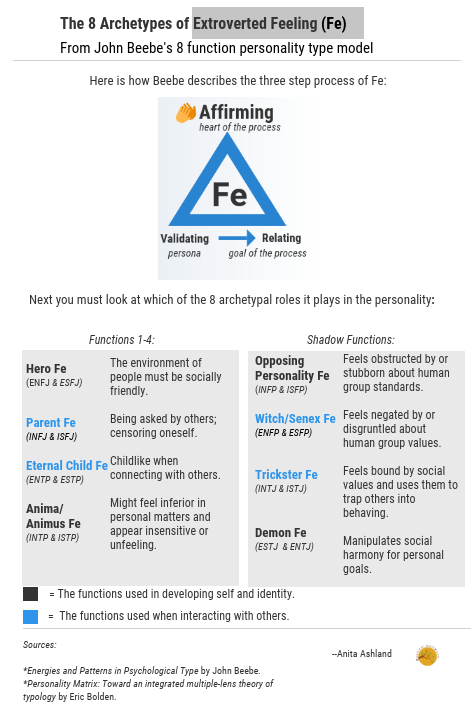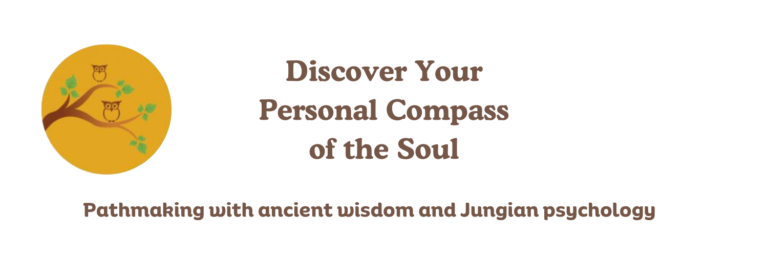To look at extraverted feeling in a nuanced way we will explore all 8 of the different roles it plays in the personality. This is per Jungian analyst John Beebe’s 8 function personality type model.
First, here is a refresh on what a function is, as per James Hillman: “A relatively unified, relatively consistent and habitual pattern of performance which enjoys itself in its activity, a pattern that likes to be exercised.” (Lectures on Psychological Type, 1971, p. 91)
Now we’ll look at Fe in general terms. Feeling, along with thinking, is a judging function. Here is Jung’s definition of extraverted feeling, where we see how it differs from introverted feeling in that it is not based on subjective values:
Extraverted feeling has detached itself as much as possible from the subjective factor and subordinated itself entirely to the influence of the object. Even when it appears not to be qualified by a concrete object, it is none the less still under the spell of traditional or generally accepted values of some kind.
(Jung, Psychological Types)
Jungian analyst Daryl Sharp elaborates further:
Extraverted feeling types are generally amiable and make friends easily. They are quick to evaluate what the outer situation requires, and readily sacrifice themselves for others. They exude an atmosphere of warm acceptance, they get the ball rolling at a party. Except in extreme cases, the feeling has some personal quality—there is a genuine rapport with others—even though the subjective factor is largely suppressed. The predominant impression is of a person well adjusted to external conditions and social values.
(Personality Types, Sharp, p. 50 )
Below is the infographic I made that describes all 8 archetypal roles of Fe. All personality types have Fe and it behaves differently depending on where it is located. Half of the 16 personalities have it in the top four functions where it is more conscious. The other half have it in shadow.

These archetypes descriptions are just sketches and aren’t meant to be literal. The shadow functions in particular are highly qualitative. Our shadow is unconscious and the contents of each person’s shadow differ, of course.
The shadow functions are a guide for you to understand your complexes better. When you get “triggered,” and it is brought to your conscious attention (usually by another person) you can try to trace it back to a shadow function and then reverse engineer it further to explore the origin of your complex.
Remember that no function ever acts separately from the other functions. Jung said we almost never see a pure form of a function. We consider a function only in order to better understand the whole of the personality.
This is part 5 of 8 in the series. My other articles in the series:
The 8 archetypes of Extroverted Sensation (Se)
The 8 archetypes of Introverted Sensation (Si)
